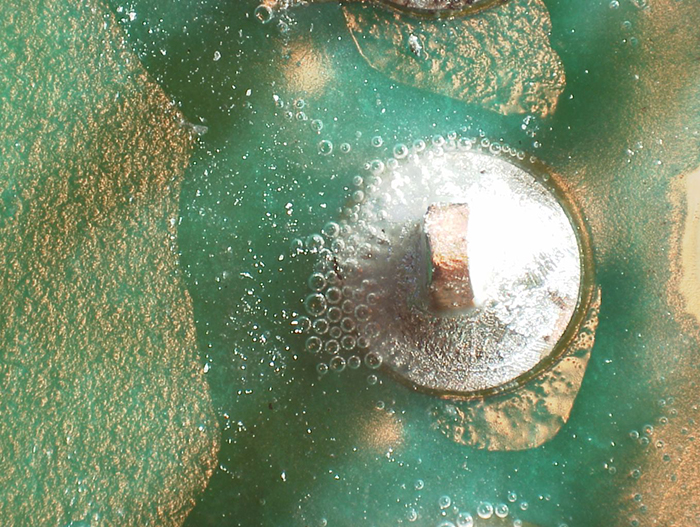Bubbling Up

Temperature changes in laser soldering can cause pockets of flux.
Flux bubbles, like those shown in FIGURE 1, were most commonly seen in laser soldering and probably related to the speed of temperature rise and cooling during the soldering operation. If flux is to be removed by cleaning, and provided the material is still soluble in the chosen cleaning system, there should not be a problem. If the boards were to be conformally coated as part of a no-clean process, it may be difficult to differentiate the flux bubbles with voids or bubbles from the coating process.

Figure 1. Flux bubbles, likely caused by temperature changes.
Such bubbles are an indication of the process parameters used and the flux vehicle that could be developed further for this type of automated process.
Inevitably, where there is an increasing market for wire for this type of operation, there may be more innovation. As the bubbles are in the flux residues, it is probably not an issue; however, it is a task for engineering to work with material suppliers to optimize the process.
These are typical defects shown in the National Physical Laboratory’s interactive assembly and soldering defects database. The database (http://defectsdatabase.npl.co.uk), available to all this publication’s readers, allows engineers to search and view countless defects and solutions, or to submit defects online. To complement the defect of the month, NPL features the “Defect Video of the Month,” presented online by Bob Willis. This describes over 20 different failure modes, many with video examples of the defect occurring in real time.
is with the National Physical Laboratory Industry and Innovation division (npl.co.uk); chris.hunt@npl.co.uk. His column appears monthly.
Press Releases
- Industry Leaders Koh Young, Fuji America, and Creative Electron Unite to Launch The SMT Future Experience
- NanoFlowX Announces Strategic Partnership with Bentec Ltd to Accelerate PCB Protection Innovation Across Europe and India
- Strong signal for the industry: productronica 2025 drives positive industry trend
- Sharpen Your ESD Skills: CE3S Announces Desco’s First ANSI/ESD S20.20 Training Series for 2026







